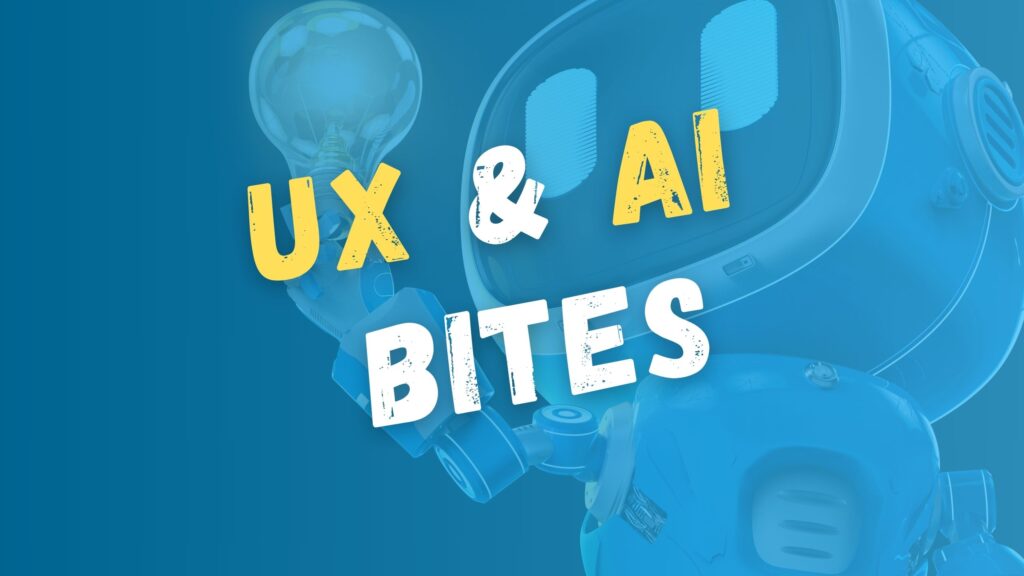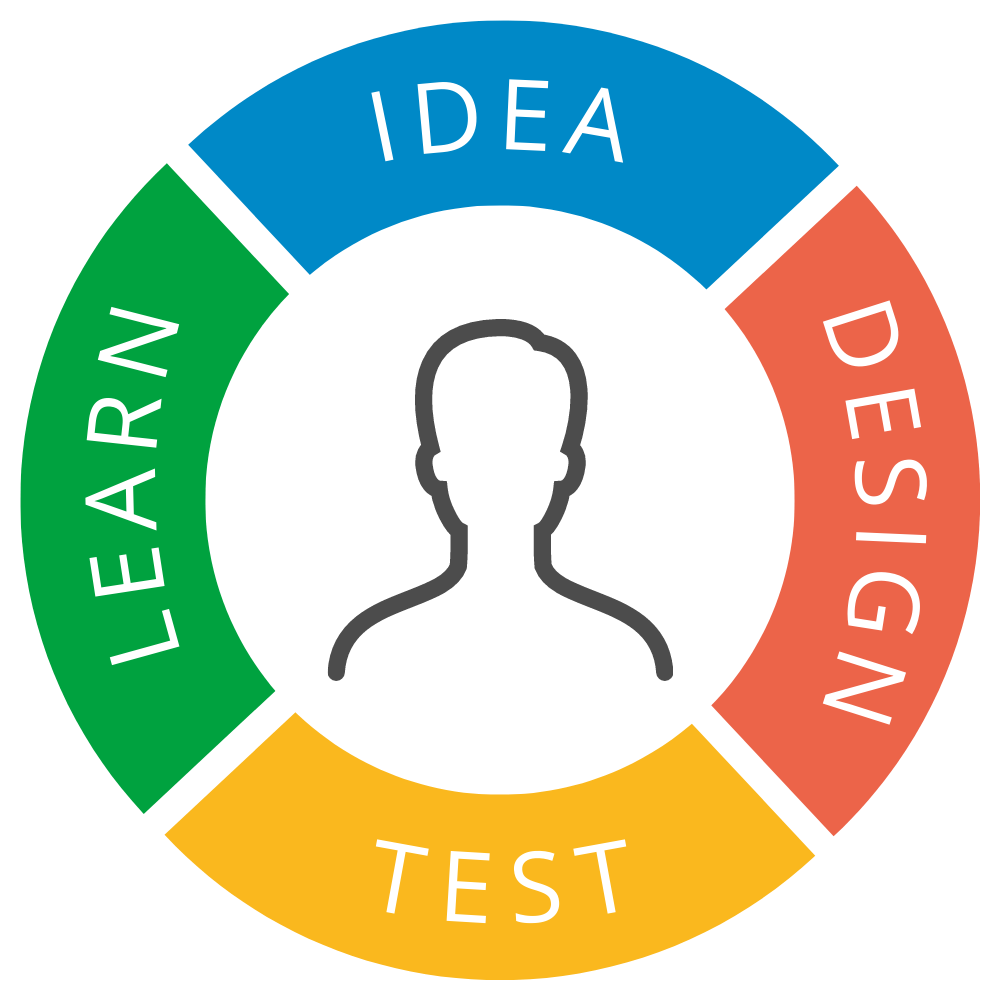
⚡️ Interesting stories, tips, and thoughts from the realms of user experience, design, and artificial intelligence are once again before you. ⚡️
1. What is the UX meme of the Month of Wisdom?
For this month’s meme, I chose an image that conveys an important idea. If the initial solution doesn’t work, boldly try to think “outside the box,” test, and experiment. The more you try, the faster you’ll reach a working solution.

2. Which AI program should you try?
- For September’s AI program, I have chosen Uizard.
- I like to use this program for low-fidelity prototyping of user interface architecture to create an initial sketch to test with end-users.
- The Uizard program is essentially simple; you can draw yourself, use ready-made content blocks, or generate user interfaces with the help of a AI chatbot.

The picture is taken from a UX/UI design training where I also teach how to use AI tools. The image shows a low-fidelity view of a user registration prototype screen generated by Uizard’s AI.
3. Which user experience quote resonated during the Month of Wisdom?
- “Probably before the release, we should have tested these questions even more with the target group. Indeed, today’s exam participants are likely not ready for such complex questions; they could be a bit simpler, and this is certainly a thought we’ll take with us—that testing is quite important before making a product or service public.”
- Director General of the Transport Administration, Priit Sauk, at the press conference on September 27th, where the Transport Administration explained the reasons behind suspending traffic theory exams.
Source: Postimees
4. What was the impact of a gamified customer experience of an investment app on users?
- Gamified design: The Robinhood app used lottery effects, stock leaderboards, and impulsive communication to make investing entertaining.
- Easy trading: One-click transactions encouraged users to invest quickly, often without weighing the risks.
- Psychological factors: Gamified elements can create temporary investment satisfaction but may promote impulsive and risky behavior, often leading to poorer financial outcomes.
Source: Medium
5. What advice does a former Apple product designer share?
- Great product, not MVP: Apple focuses on creating top-notch products, not quick fixes.
- Storytelling is a superpower: Design presentations as engaging and with empathetic narratives to better convey your ideas to the leadership team.
- Preference for big ideas: Long-term goals and significant achievements are priorities at Apple; smaller nice-to-have improvements are often considered secondary.
Source: Medium
6. Is fewer clicks better?
- Minimize effort, not clicks: Reducing clicks is not always effective, as it assumes bringing out all elements. It’s important to understand that for the user, the most crucial aspect is that the necessary action requires as little cognitive effort as possible, not fewer clicks. A logical journey is often better than information overload.
- Focus on the 80/20 rule: 80% of user actions consist of only 20% of features. Therefore, frequently used features should be easily accessible, while less frequently used features can be a few clicks away.
Source: UX Collective
7. Why is introversion not an obstacle to becoming a UX/UI designer or researcher?
- Listening skills: Introverts are often attentive listeners who give users space to express their thoughts.
- Empathy: Introverts can put themselves in users’ situations, sensing details that help create engaging and user-friendly solutions.
- Analytical ability: Introverts deeply analyze information and offer thoughtful, reasoned solutions.
- In summary: Just as extroverts have their strengths, so do introverts. Both can create excellent solutions. By knowing your strengths, you’ll always find the best solution. Be yourself!
Source: Smashing Magazine
8. How to create table content using AI to use in your prototype for testing with users?
- Formulate the data context: Tell the AI—such as language models like ChatGPT or Claude—what the table content should be to match the correct domain. For example, if it’s a business software prototype for a shoe store, mention this to the AI.
- Specify the desired amount of data: Define how much data needs to be generated and in what format, so the table meets realistic expectations. For example, specify that you need 50 rows of data, including the shoe name, size, price, number of units sold per month, etc. Specify that you want the prices in euros.
- Set the data order: Describe to the AI how to sort the data in the table and in what order to display it. For example, ask the AI to arrange the table rows alphabetically by the shoe name.
- Test and validate: Have the AI show its calculation process and check the results to avoid misleading numbers or incorrect conclusions. For instance, tell the AI to ensure that the total monthly sales sum from the rows always adds up to 214,856 euros.
Source: Nielsen Norman Group
9. How many Estonian companies use artificial intelligence?
- Artificial intelligence usage is growing: 14% of companies use AI, compared to 5% last year.
- Popular technologies: Text mining (7%), natural text generation (6%), and image recognition (4%) are being used.
- Largest users: The finance and insurance sector, as well as information and communication, and professional, scientific, and technical fields.
- Main obstacle: Lack of relevant knowledge is a barrier to AI adoption.
Source: Statistics Estonia
10. How to inspire an AI language model to think more deeply?
- One word: The author suggests using the word “ruminate” in the prompt to encourage the AI to consider answers more deeply.
- Slow and methodical approach: Quick responses tend to lead the AI to make mistakes. Encouraging the AI to compose answers more slowly achieves more accurate results.
- Example: If you ask the AI to “ruminate” on how many “r”s are in the word “strawberry,” it usually gives the correct answer—3—instead of quickly answering 2 without rumination. Note: In the new ChatGPT o1 model, which is gradually rolling out to everyone, this peculiarity has been resolved, but not yet in Claude 3.5 Sonnet.
Source: Medium
11. How much does it cost to train AI models?
- Large investment: Training AI models can cost around $100 million, and developing next-generation models can reach $5–10 billion.
- Powerful chips: The Nvidia H100 chip alone, used for training AI systems, can cost over $30,000 apiece.
- Capital concentration: Big companies like Microsoft, Meta, and Alphabet are investing billions, while smaller AI players struggle to keep pace.
Source: Bloomberg
12. Can AI learn to create artworks like a human?
- Differences in creating art: AI creates art using mathematical algorithms, not human creativity and emotions. AI cannot be conscious of creating art because it imitates patterns.
- Copyright issues: If AI learns from copyrighted artworks without permission, the question arises whether this is fair compared to humans learning from other artists.
- In summary: AI cannot learn or create art in the same way humans do, as it is not aware of the creative process.
Source: Medium
13. How to generate a good image in Midjourney?
- Longer prompts: By using more detailed prompts, you usually gain greater control over the image outcome.
- Photography and styles: Add the names of photographers or art styles to your query to influence the final result.
- Professional techniques: Queries that include lighting, focal length, and composition provide a more professional look.
- Inspiration and creativity: Experimental prompts can help create unique and creative visuals. So feel free to experiment!
Source: Medium
14. How did the AI residing in a Chinese smartwatch anger its users?
- User’s question: Are the Chinese the most trustworthy people in the world?
- AI’s answer: An AI named Xiao Du replied that, based on its experience, they are a dishonest and hypocritical people.
- Conclusion: To prevent language models from producing impolite responses, we need to learn to configure them better.
Watch the video: YouTube
15. Why do leading IT scientists want to implement the proof of being human?
- Distinguishing artificial intelligence: AI is increasingly able to mimic humans, making it ever more difficult to distinguish technology from people.
- Solution: The idea has been proposed to implement cryptographically authenticated human personality credentials, which would help prove humanity without revealing personal identity.
- Challenges: The system must be reliable and free from political influences of states.
Source: ERR Novaator
16. How did Nvidia become the king of AI chips?
- Starting in the gaming world: Nvidia began by creating graphics cards for the gaming industry, but their technology opened doors in other fields as well.
- Parallel computing: Nvidia GPUs, or graphics processing units, originally designed for rendering 3D images, were well-suited for processing complex data sets, including for artificial intelligence.
- AI breakthrough: Nvidia GPUs became an important tool in AI research, for example, in Google’s early projects where AI was used to identify cats in YouTube videos.
Source: Medium

